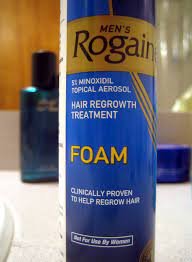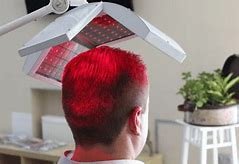What is the best way to treat female hair loss?
Female hair loss can be treated in a variety of ways, which includes hormone therapy, light therapy, topical medications, eating a nutritious diet, and in worst cases hair transplant.
Hair loss in women can be caused by a variety of factors, such as changing hormone levels, genetics, or a natural part of the aging process.
Minoxidil
Minoxidil is approved by the Food and Drug Administration (FDA) to treat hair loss, which is sold under the name of Rogaine and can be found with other genetic brands, topical minoxidil over the counter (OTC) can be purchased. Both males and females after utilizing it, users report a high level of satisfaction.
Minoxidil fortifies development within the hairs and may increment their development cycle. It can help to grow hair thicker and it also helps to reduce the patchiness or a broadening hair separation.
Minoxidil medicines are accessible in two concentrations: The 5% solution or foam requires daily use, while the 2% solution requires a twice-daily application for the best results.
The stronger solution is not necessary, found that 2% minoxidil was successful for females with androgenetic alopecia or design hair loss.
A person can use minoxidil indefinitely if a person finds success with it. When an individual stops utilizing minoxidil, the hairs that depended on the drug to grow will likely fall out within 6 months.
Side effects from minoxidil are generally mild, such as alcohol or propylene glycol present in the product and because of these some females may experience irritation or an allergic reaction, by trying different brands the symptoms can be alleviated.
A few females may encounter expanded hair misfortune, to begin with when utilizing minoxidil, but by the time hair become stronger and this typically stops after a few months.
Minoxidil should be applied only on the scalp because it applies on the forehead or on the neck so hair will grow on those areas as well.
2. Light Therapy
This therapy may not be a sufficient treatment for hair loss on its own, but it may act to open up the impacts of other hair misfortune medications, such as minoxidil.
Including low light treatment to normal 5% minoxidil treatment for androgenetic alopecia made a different move forward in the recuperation of the hairs and the participants’ general fulfillment with their treatment.
3. Ketoconazole
Androgenetic alopecia where inflammation of hair follicles often contributes to hair loss can be treated by Ketoconazole.
Topical Ketoconazole might improve the strength and look of the hair and also helps in the reduction of inflammation.
The shampoo with Ketoconazole is also available.
4. Corticosteroids
Corticosteroid injections can show response in some females. This treatment is done when it is necessary and must be preferred by the doctor, for conditions such as Alopecia areata. In this condition hair fall in random patches.
Injecting corticosteroids directly into the hair loss patch may encourage new hair growth. Creams, lotion, and other preparations having corticosteroids may also reduce hair loss.
5. Platelet-rich Plasma
Early proof proposes that infusions of platelet-rich plasma may offer assistance diminish hair misfortune. The person’s blood is drawn by the doctor then separates the platelet-rich plasma from blood and then this will be injected into the scalp at affected areas. This helps speed up tissue repair.
This treatment helps increase hair density, increase the diameter of each hair and also reduce hair loss.
Be that as it may, since most consider up until presently have been exceptionally little, the audit calls for more inquire about utilizing platelet-rich plasma for androgenic alopecia.
6. Hormone Therapy
If hair loss occurs due to menopause so this is because of hormone imbalances. Some doctors may recommend some form of hormone therapy to correct them.
Birth control pills and Hormone replacement therapy can be possible treatments for either estrogen or progesterone.
Spironolactone (Antiandrogen medication) can be a possibility to treat hair loss caused by a hormone imbalance of Androgens, due to androgen hair loss in some women can be sped up, particularly those with polycystic ovary syndrome, who typically produce more androgens.
Antiandrogens may cause side effects so always talk to the doctor and take a test whether it is suitable or not.
7. Hair Transplant
This is extracting small pieces of the scalp and applying them to bald spots to naturally promote hair growth. A hair transplant is recommended by doctors when a person is not responding to any other treatments. This treatment is not suitable for everybody and it is more costly than any other treatment.
8. Use Hair Loss Shampoos
Sometimes pores become clogged on the scalp which causes hair loss. The pores can be cleared from dead skin by using medicated shampoo and it may promote healthy hair. This minor hair loss can be a cure.
9. Eat a nutritious diet
Normal hair growth may be supported by a healthful diet. Many different vegetables and fruits are included in a healthful diet which contains many other varieties of foods, this provides many essential nutrients and compounds that help keep skin and hair healthy.
Iron levels are really important for hair growth. Iron deficiency can be checked through blood tests so if a female has iron deficiency so hair loss can occur. A doctor may advise consuming an iron-rich diet or taking an iron supplement.
10. Scalp Massage
Scalp massage helps keep the scalp and hair follicles healthy. By massaging the scalp dandruff can be clean and it will increase blood circulation as well.










